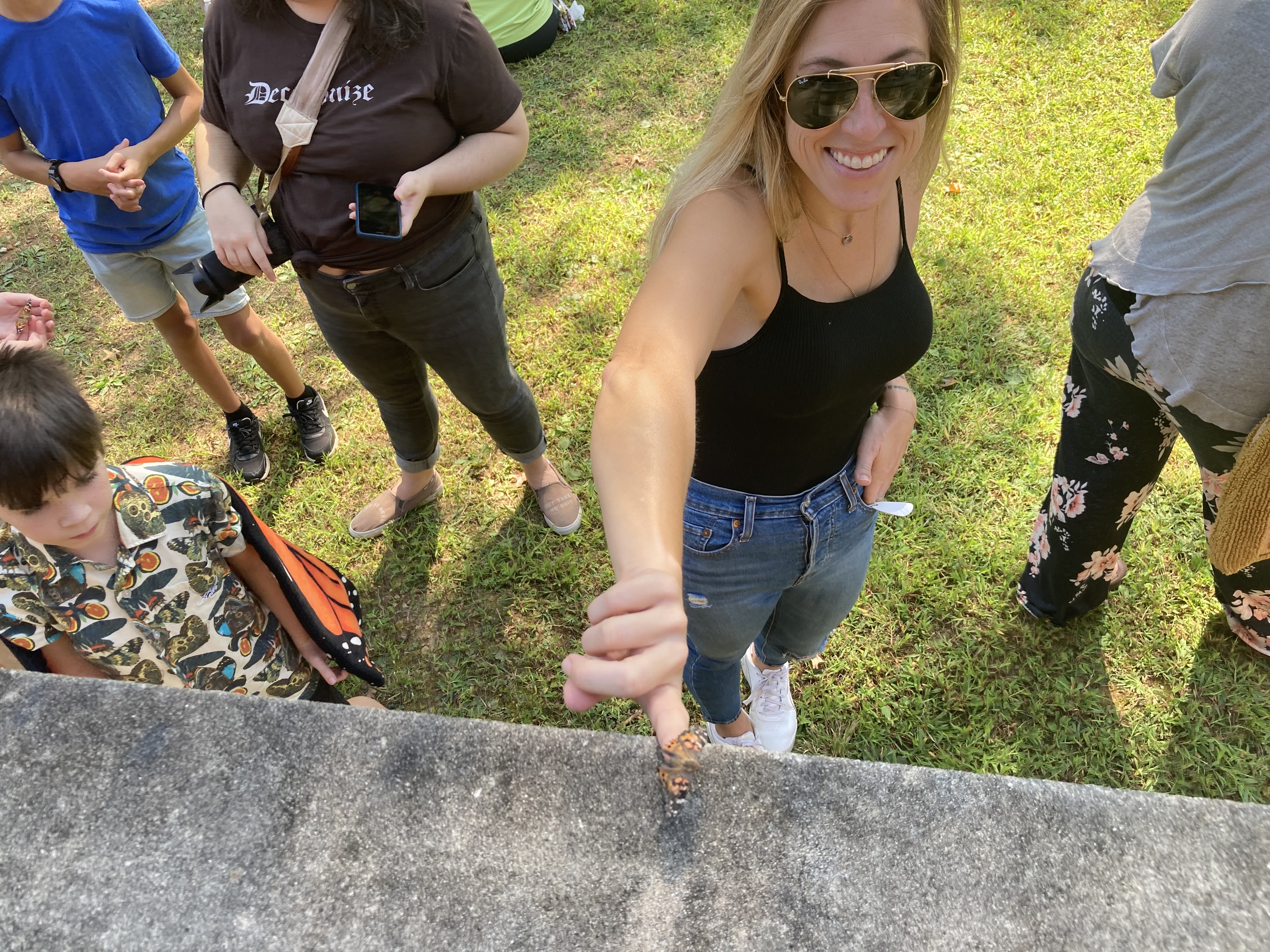Siru and Rich Curzon of Tennessee Naturescapes gave away one free native pollinator plant per family and sold others.
“We don’t want it to end here. We want people to take it with you,” Michelle Campanis, the education coordinator at the UT Arboretum told a crowd at the event after two lectures by two authors, Stephen Lynn Bales and Georgeann Eubanks, speaking about helping people care for and about butterflies.
“My whole premise is that my garden is habitat,” Campanis said.
“What you can do is build a little island,” Bales, a regular Hellbender Press contributor, said in an interview regarding the idea of gardening to help butterflies.
This “little island” in a yard provides habitat for the butterflies through the use of specific plants.
Also on hand was UT Professor Jerome Grant, who with his students presented live and preserved insects to the crowds.
“Butterflies are ecologically important to all of us," Grant said in an interview outside a mesh tent full of painted lady butterflies, also known as cosmopolitan butterflies. Painted lady butterflies, he said, are migratory and live on every continent except Antarctica and Australia.
In addition to their beauty, butterflies are good pollinators for many plants. They also serve as food for other animals and indicate the quality of the environment. He also said butterfly gardens were a “great therapy tool for a lot of people.”
Author and naturalist Georgann Eubanks encouraged people to focus on plants and habitats in the Southeastern United States.
“We have incredible botanical riches in the South,” she said.
She talked about her book, “Saving the Wild South: The Fight for Native Plants on the Brink of Extinction.”
“We have incredible botanical riches in the South,” she said, speaking out against “plant blindness,” which she described as a lack of interest in plants.
She concluded her talk with advice on how to plant and maintain a garden, including common milkweed and bee balm, that attracts butterflies and other pollinators. She urged people to support local nurseries that have native plants.
“Plant a billboard,” she said, defining a billboard as a large area of a plant like bee balm or milkweed, so that the pollinators can see it. She said butterflies utilize brush piles, stone piles and mud puddles, so keeping them in gardens is a good idea.
Bales spoke about Tennessee’s butterfly species and the plants they use. He spoke not just of the plants they pollinate as adults but of the host plants on which they lay their eggs. For instance, the painted lady, which was the focus of the event, uses the swamp thistle as a host. The zebra swallowtail, which is Tennessee’s state butterfly, uses the pawpaw.
Bales praised pawpaws as food for humans as well. “Just to have one in the kitchen is a delight,” he said.
